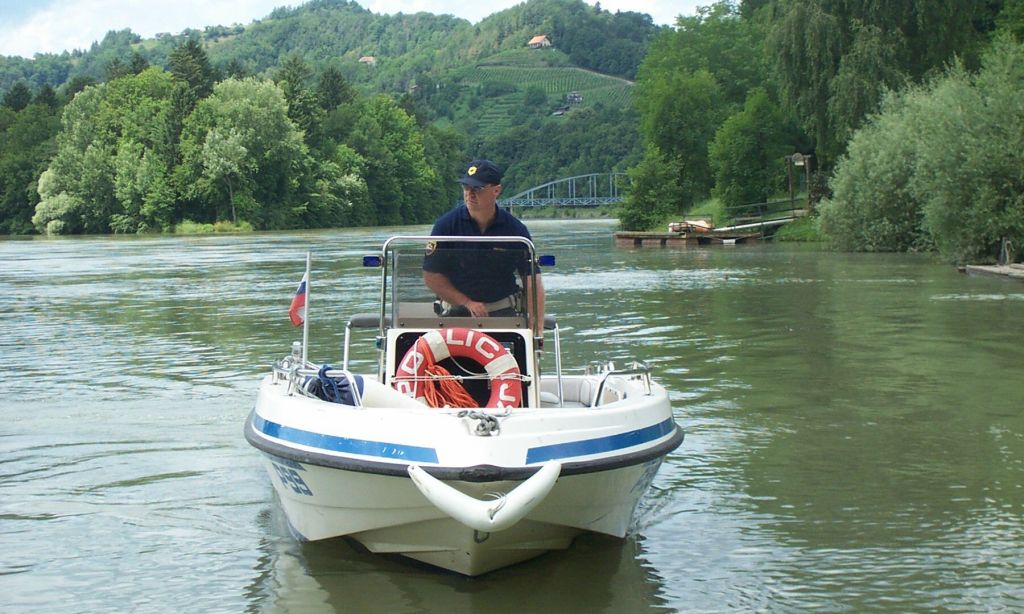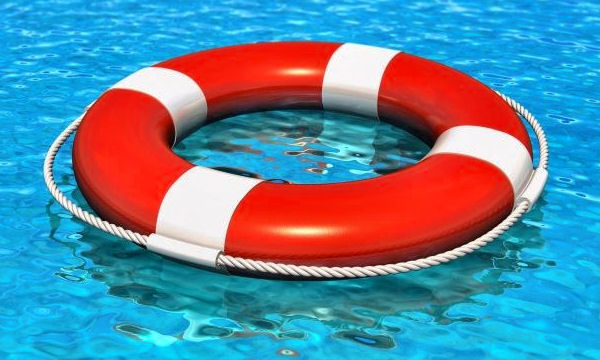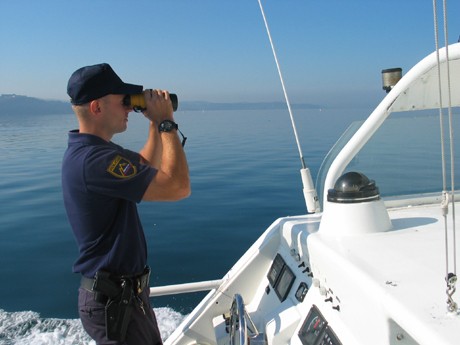Although water refreshment on hot summer days is more than pleasant, you must not forget the basic safety measures. Take them into account, they can save your life.

Police advise
- Do not jump into the water when you are hot and sweaty: the body must gradually get used to the water temperature.
- Do not leave children unattended on the shore or banks of lakes and rivers, much less in water: children do not know the dangers. Parents and educators are reminded to keep a close eye on children playing near the water, even if it is shallow.
- Floating mattresses and other swimming aids do not ensure safety in deep water.
- Never swim with a full stomach, and not with a completely empty stomach as well. Wait at least two hours after a large meal, also avoid alcoholic beverages.


- Do not jump into murky water, in shallows or in unknown places: unfamiliar situations are very dangerous.
- Consider the weather conditions. Do not swim long distances alone: even a very hardy and trained body can be overcome by momentary weakness.
- Rough seas and sea currents usually carry bathers away from the coast.
- At the swimming pools, follow the provisions of the bathing rules and the signs posted at the swimming pool, as well as the orders and instructions of the lifeguard and other person responsible for maintaining order at the swimming pool.
- Use devices at swimmming pool according to your swimming skills and without danger to your health and life.
- Rapids hide surprises and traps. Act thoughtfully and don't provoke nature. Gather as much information as possible about the river before descending and take appropriate safety and rescue measures.

- At swimmming pools, offenders don't rest. Caution against casual thieves, sexual abusers and others who may appear in the baths will therefore not be superfluous. Watch out for others and their property. If everyone acts like this, greater security will be ensured.
- Do not drink before swimming and do not bet with friends that you are able to swim across a nearby gravel pit, for example.
- Be careful when walking by the water, especially if you are walking on steep river banks, where a slip can tragically end. Parents, pay special attention to your children.
Bathing is only allowed on water surfaces intended for bathing. These must be separated from water surfaces intended for sporting and leisure activities. The separation must be physical or marked by visible, interconnected floats. In the sea, bathers must be within boundary of the 150-metre zone along the coast, unless otherwise specified.
Let's not forget about safety at wild baths, in gravel pits, lakes and rivers, where we bathe at our own risk. These places attract many bathers in good weather, but they do not have organised water rescue services nor operators. Unfortunately, even rescuers cannot always save lives when taking immediate action at well-maintained swimming pools. Due to the different water levels and water eddies, these wild bathing areas can be very dangerous for bathers. Unfortunately, many bathers do not heed the warning signs Unemployed access prohibited! or Swimming at your own risk!, which are placed in some places. Abandoned gravel pits filled with water, which pose a risk of drowning, are also extremely dangerous and no one controls them. In some places, water can reach up to 15 meters deep. Please heed the warnings: do not dive or jump in these waters if they are murky! We warn mostly children about this. Children, especially younger ones, drink a lot of water while bathing, so they should be constantly reminded to avoid swallowing water while swimming. The water in which we bathe must not be used for drinking or food preparation (not even for washing and cooling fruit), in case of skin inflammation or skin damage we do not decide to bathe.
Various recreational activities on water, such as rafting, canyoning (climbing in canyons with a rope technique and descending rapids), hydrospeed (descending rapids with a board), bungee jumping (jumping with an elastic bungee jumping cord), are also problematic from a safety point of view.
Caution is also advised when walking along the water, especially if the banks are steep. Just a moment of inattention and a slide can end tragically. Parents and educators are reminded to keep a watchful eye on children playing near water, even if it is shallow.
Owners or operators of vessels on the waters must ensure safe navigation and the safety of people and property on board. A vessel must not endanger the safety of other vessels or other people in or on the water. Life jackets must be stored in a convenient place.

| If you see someone drowning, do not jump headlong into the water after them. If you are not a good swimmer, your courage may be in vain and the lifeguards will have to rescue two people instead of one person. |
Your call to the Emergency Call Centre (112) or the police (113) can save a drowning person's life, as can a call to the Slovenian Maritime Administration at sea.
 In summer, people like to rent a boat or other watercraft at the seaside or on rivers and lakes. You should be aware that loaners of equipment and resources for sport and leisure activities can only rent you equipment that is suitable for the current weather and water conditions. They are also not allowed to rent equipment to persons under the age of 15 if they are unaccompanied by a parent or an adult to whom this younger person is entrusted to care. The equipment and resources must be technically faultless at the time of issue, and users must be familiar with the basics of use. Equipment and resources shall also not be given to persons who are under the influence of alcohol, drugs or other psychotropic substances, as well as to mentally and physically disabled persons whose activities could endanger their own safety or the safety of others, if they are unaccompanied by their parents or an adult who is entrusted with their care. During working hours, the rental companies must ensure constant supervision of the rented vessels and the presence of a person who is qualified to rescue them from the water.
In summer, people like to rent a boat or other watercraft at the seaside or on rivers and lakes. You should be aware that loaners of equipment and resources for sport and leisure activities can only rent you equipment that is suitable for the current weather and water conditions. They are also not allowed to rent equipment to persons under the age of 15 if they are unaccompanied by a parent or an adult to whom this younger person is entrusted to care. The equipment and resources must be technically faultless at the time of issue, and users must be familiar with the basics of use. Equipment and resources shall also not be given to persons who are under the influence of alcohol, drugs or other psychotropic substances, as well as to mentally and physically disabled persons whose activities could endanger their own safety or the safety of others, if they are unaccompanied by their parents or an adult who is entrusted with their care. During working hours, the rental companies must ensure constant supervision of the rented vessels and the presence of a person who is qualified to rescue them from the water.
More and more people have a swimming pool in their home garden. These pools are particularly dangerous for children, who may accidentally fall into the water while playing. Parents, don't leave your children unattended when they go swimming! Other inconveniences can also occur, such as falls, sprains or fractures of limbs, abrasions. We therefore recommend the following measures.
Constant control of the pool: Constant control of the pool is the only safe way to prevent drowning. If you can't find your child, check the pool first - seconds are ticking. Adequate continuous control should be ensured by the following measures:
- Never, not even for a second, leave your children alone in bathtubs or swimming pools. Don't think that nothing can happen to you and your children.
- If you have to leave the pool, take your child with you.
- Responsibility for children's safety is the task of adults. Do not entrust this task to older children, as it is too great responsibility for them. Many children drown in the presence of older brothers or sisters.
Before building a swimming pool, consult an expert who will advise you on the correct layout and shape of the pool based on your environment, the number of users and the time the pool will be used.
In order to use the pool safely, the following should be noted:
- It is recommended to place a properly designed fence around the pool, which will prevent particular small children from possible falling into the pool.
- Do not leave chairs or other objects next to the pool that children can use to overcome obstacles (fences).
- Maintain the pool - the water should not be murky or dirty.
- The water level should reach as far as possible to the edge of the pool, making it easier to climb out of the pool.
- When building a pool, avoid sharp edges and slippery materials that cause slipping and make it difficult to grip.
- The water spout or jets in the pool should be directed in such a way to direct floating objects (e.g. a ball) into the shallower part of the pool next to the steps or ladder.
- Ladders and steps leading out of the pool should be installed on each side of the pool. They should not be slippery and should not allow slipping.
- Recommended equipment for the pool is also a rescue board. There are more and more spine injuries in swimming pools due to inappropriate jumping into the water. The board is the best way to immobilize the casualty in such a way that the rescue is much safer for them.
Among the last and most important measures to prevent drowning is your child's participation in one of the swimming courses, which are aimed at beginners, poor swimmers and even good swimmers, and where it is possible to learn swimming and first aid for drowning.
 Choose a swimming course where your child will learn how to behave when playing in or around the water, because knowing how to swim is a basic requirement for feeling safe in the water. Water is not entertainment or a safe place to play if your child cannot swim. Try to find out as much as possible about the swimming course programme. The questions should be directed primarily at the content of the programme: which special skills will be devoted to the most time when learning to swim and with what techniques will these skills be mastered, how many instructors will deal with the students.
Choose a swimming course where your child will learn how to behave when playing in or around the water, because knowing how to swim is a basic requirement for feeling safe in the water. Water is not entertainment or a safe place to play if your child cannot swim. Try to find out as much as possible about the swimming course programme. The questions should be directed primarily at the content of the programme: which special skills will be devoted to the most time when learning to swim and with what techniques will these skills be mastered, how many instructors will deal with the students.
 Make sure that in addition to swimming, your child will learn to float on his back on the water, to rest and breathe properly, and to swim when the water ripples. Knowing these skills is very important for a child's safe feeling in the water.
Make sure that in addition to swimming, your child will learn to float on his back on the water, to rest and breathe properly, and to swim when the water ripples. Knowing these skills is very important for a child's safe feeling in the water.
Advice for casual water rescuers. How to rescue from water? It is better to throw a rope or a branch to a drowning person than to jump into the water to save him. Heroism can be disastrous for both the drowning person and the rescuer. Rescue is a huge physical effort. The drowning person should be approached from the back side and grabbed, for example, by the hair. If the drowning person clings to the rescuer, the rescuer has no other way out but to submerge and thus escape the deadly grip.
Related content
Advice for safe diving
First aid for drowning
Safety on holidays

